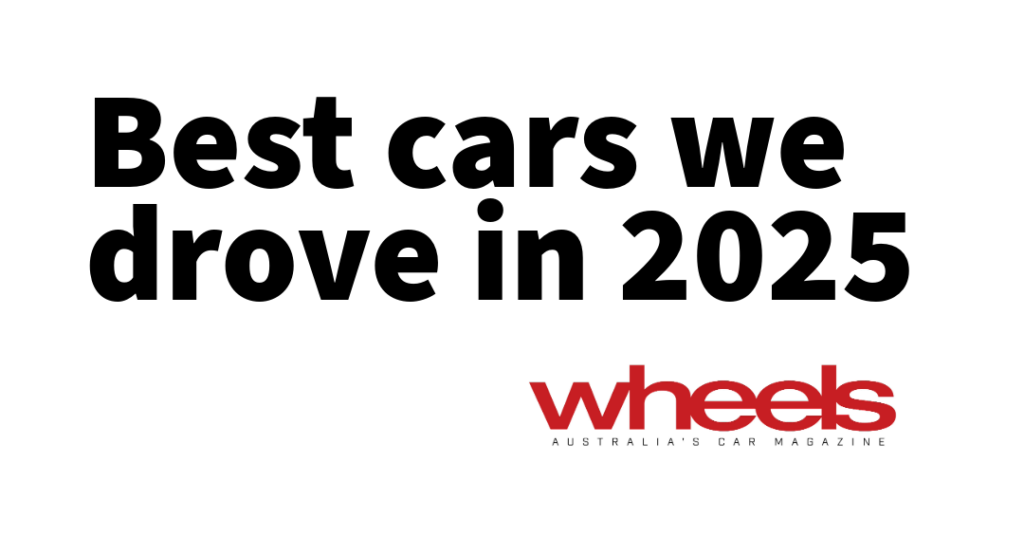I’ ve never particularly understood people who go to Greece to lie on a beach. You know we’ve got a few here that aren’t half bad? Of the 10,685 beaches in Australia (someone’s counted) surely there’s one that suits.
It’s a bit the same for roads. I’m sure the Stelvio Pass is not without its charms, but it’s worth poking around your own backyard first. Because there are gems. Three hundred million years of erosion has ground down the Great Dividing Range, one of the oldest mountain ranges in the world, to create a terrain ripe for corners of every variety.
Where Europe’s mountains ascend so dramatically the only way to climb them is with terraces of hairpins, Australian’s mountains (dramatic hills might be a more accurate description) undulate rather nicely. For great roads, the antipodeans have it pretty good.
And for Australia, combine a tiny population in an enormous country, but with enough riches to make decent roads (at least alpine ones) and you’ve a recipe for bendy stretches that are largely empty.
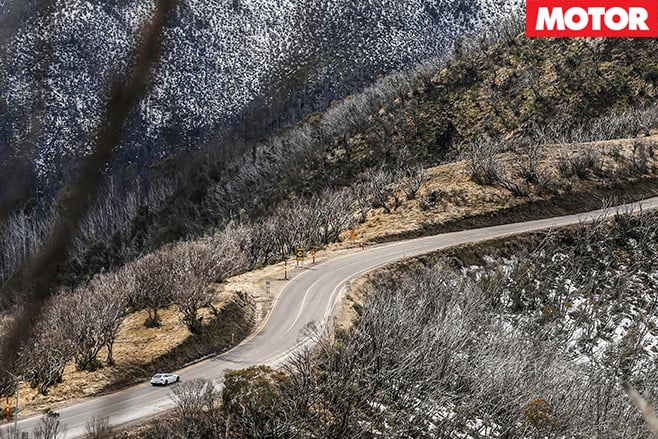
Not just by virtue of its altitude, the Great Alpine Road has a perilous sector unusually exposed to the elements. When surveyors mapped its route in the 1870s, they wound the road through country close to and above the tree-line at Mount St Bernard and Mount Blowhard. Still today this wayward sector closes often due to snowfall and occasionally its bypassing is debated, but still the snow ploughs man the road year after year.
In the right car it’s not a problem. And for our expedition across the top of Australia – still in the winter months – we could do worse than the storming V12, all-wheel drive Ferrari FF. True, it’s been around a few years now (five) and in fact this year, it’s due for a major overhaul.
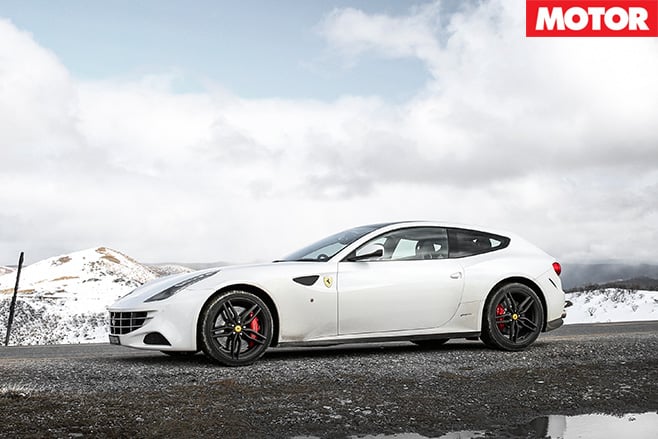
Fitting the 6.3-litre, naturally aspirated V12 helped from the outset to clear any confusion the FF was the accountants’ crack at a Ferrari Cayenne (and hopefully the FF is as close to an SUV Ferrari ever comes). You needn’t be a mathematician, either, to calculate what happens when you combine a 12.3:1 compression ratio and 8200rpm (the FF’s indicated redline): 486kW at a screaming 8000rpm and 683Nm at 6000rpm.
Perhaps on paper the FF hasn’t the glut of tacho-wide torque like its newly-turbocharged California T and 488 GTB siblings, but still, 500Nm at 1000rpm is nothing to sneeze at. From any engine speed you’re not going to be yawning. Trust us.

The diff itself can shunt thrust left or right using a pair of wet clutch packs depending on where there’s more grip. And once said rearward grip has expired, the computer, imperceptibly and in milliseconds, wakes up a very alternative all-wheel drive system indeed.
It’s easiest to think of the FF as a front-engine, rear-drive Ferrari in all situations – until more accelerative grip is required than the rear tyres can supply. There is no transfer case, centre diff or extra driveshaft sending torque back to the front axle; that would be heavy and gobble up precious interior space. Not on for a practical, four-seat grand tourer.
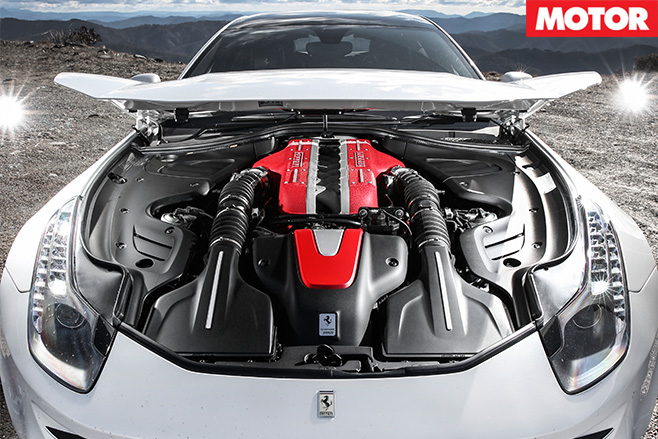
Wheel speeds are matched front to rear using super-accurate sensors and of course it all happens instantaneously and seamlessly. Beyond fourth gear, from fifth to seventh, the FF is rear-drive only.
So there is only a digital connection, not mechanical, between front and rear wheels. Ferrari calls its innovative all-wheel drive system 4RM – and promptly patented it. It also saves 50 per cent in mass over a traditional transfer case set-up. Why no other car manufacturers have thought of this, and persist otherwise, we’re unsure.
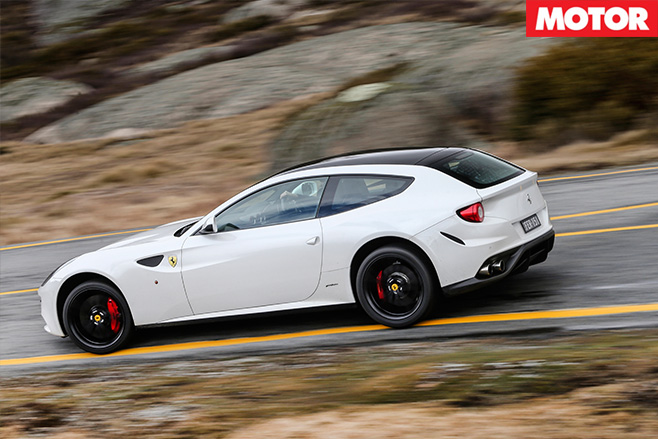
Beyond that point, it’s all traction – helpful for confidence on stretches like the Great Alpine Road at the end of winter. See, mid-winter, with every second corner under invisible ice, you can only drive one way. In summer, as snowfields pare back to meadows and the road dries out, you can only drive one way. But at the end of winter, spring knocking, the road is a lottery: one corner dry, the next wet, with an occasional patch of ice to keep you on your toes.
From Wangaratta in the north-west to Bairnsdale in the south-east, the Great Alpine Road is 307km up and over the alps. But the bit you care about begins after Bright, as snow-capped, blue-tinted mountains rise on the horizon and beckon.

Still below the tree-line and without a snowflake in sight, the road is tight and twisty and the FF, manettino switched from Comfort to Sport and the “Bumpy Road” adaptive damper setting engaged, feels big. It is a sizeable car, after all – 1880kg, as long as a Commodore but with the wheelbase of a Caprice (nearly three metres!) – you peer over what seems like an endless, sculpted bonnet. It feels Large.
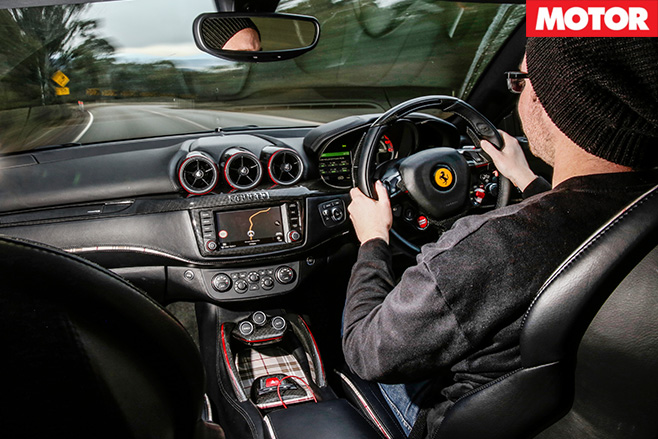
After about 16 kilometres climbing through the tight stuff you emerge through the tree-line to vistas and valleys. It’s spectacular (budget time for stopping; and a camera). Snow starts to appear, first in glugs by the roadside and as you climb further, it begins to blanket the landscape.
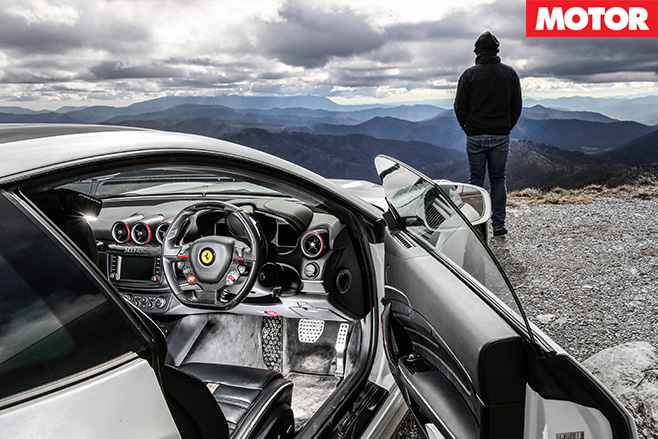
If the FF was a film the engine would be the big-name Hollywood superstar. At least once in your life, you need to work out some way of getting into a naturally-aspirated, V12 Ferrari, winding out second gear to just before 8000rpm, all LEDs atop the steering wheel alight, plucking third with a click of the carbon, scythe-like paddle (which clicks like a computer mouse) and feeling the uninterrupted, crisp and ferocious punch of a Ferrari V12.

And yet the FF still behaves like a rear-driver, up to the point you can feel the rear reacting, unhinging, but you can keep applying throttle and the effect is of claws sinking down into bitumen and launching you forward where a rear driver of comparable power would be slewing only further sideways.
It’s at 100km/h the FF feels, alarmingly, only to be just getting started. It does 0-200km/h in 11 seconds and we’ve absolutely no reason to doubt it. Around the 127km mark from Wangaratta, prepare to exhale involuntarily.
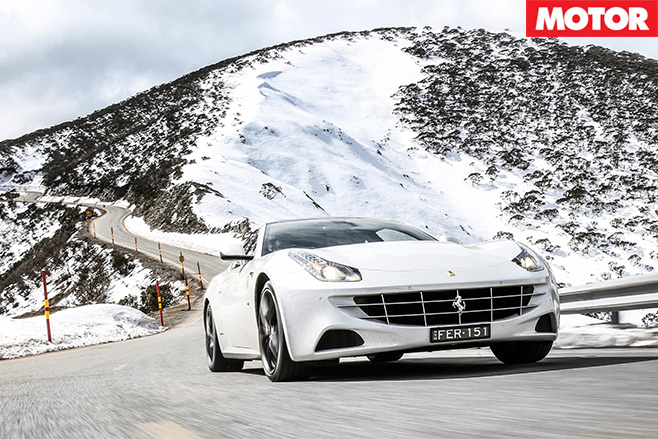
It’s the photo we’ve used on the opening spread – and arguably one of, if not the most spectacular bit of road in Australia. Slurped up like a gigantic bit of bitumen linguine in the FF. Shortly after we’re in the Mount Hotham village. As it’s still the ski season people are everywhere and yet the FF turns nary a head. It’s certainly the most unassuming Ferrari model. Being white doesn’t help.

Ferrari claims 15.4L/100km combined for the FF and that’s even after the engine’s been through efficiency boot camp (now with stop-start and more economic throttle and transmission maps for around town). We measured two fills, one was 26.5L/100km and the other, 14.4L. Average 20.45L/100km.
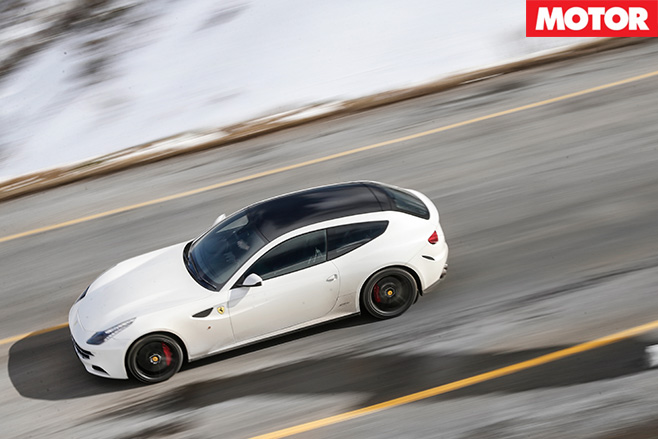
Standing around with the buzz you only get from a day of incredible driving, recalling beguiling sections of road saved to memory, we conclude two good things about Bairnsdale – the BP has Ultimate, and there’s plenty of space to turn around.



